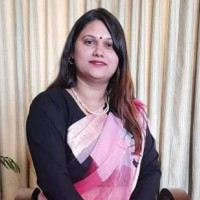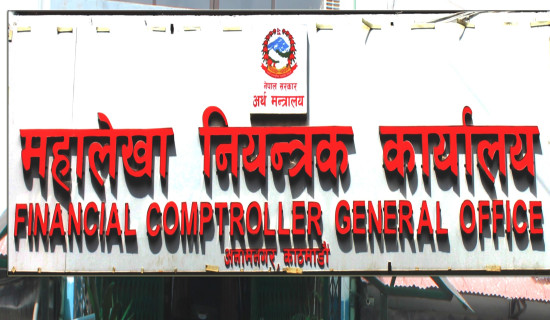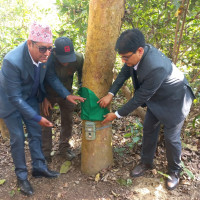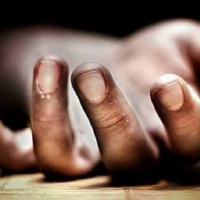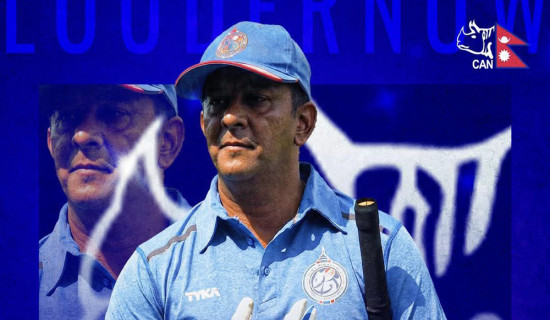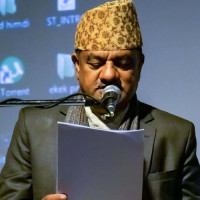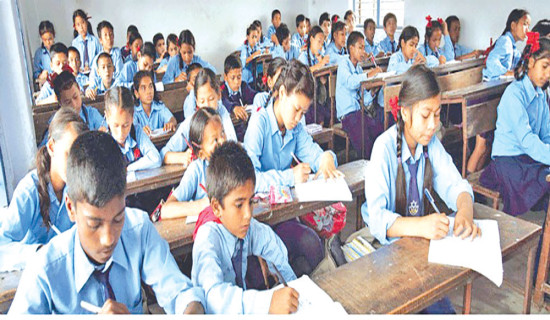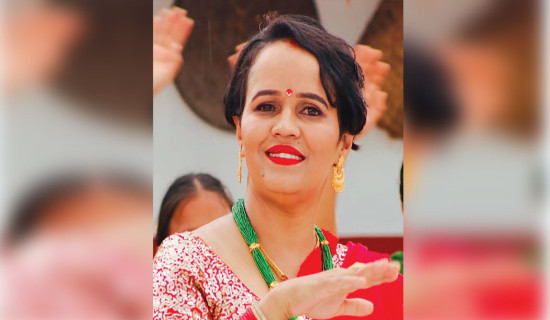- Tuesday, 16 December 2025
SEE evaluation sees finger-pointing instead of future planning for better results
Kathmandu, July 14: This year's SEE results have once again exposed the poor status of our education as more than half of the students failed to qualify for joining grade 11. No matter how much good concerns were expressed for quality education, they could not improve the results. After the results of SEE in the current year, if the concern is limited to pointing fingers at others, similar results are likely to repeat in the coming years as well.
According to the results published by the National Examination Board (NEB), only 47.86 per cent of the students passed the exams this year. It means 52.13 per cent students are non-graded in the exams. According to the results, of the 464,785 examinees, a total of 242,313 failed or got Non-Grade (NG).
Those who are in the non-graded category cannot get admission in grade 11 until they improve their grading through upgrade examination.
Since 2014, the NEB has been publishing the results in a grading system. But this year, the SEE results were published as per the Letter Grading Guidelines-2078 BS.
Though the results were published almost two weeks ago the authorities have to ascertain the national figure of how many schools have nil results. The pass per centage of students seems zero in many schools across the country. However, Centre for Education and Human Resource Development (CEHRD) said they don't have accurate figures of how many schools’ 100 per cent students failed in the examination.
Deepak Sharma, Director General of CEHRD said they have yet to collect the figure of such schools as they are busy to conduct upgrade examination.
But it is reported that many schools, especially community schools, have bad results. According to our district correspondents, a total of 12 schools of Gorkha, 10 schools of Taplejung, 13 schools of Ilam, 16 schools of Banke had nil result. The result status is similar across the country. Though the figure was revealed separately by many districts, the centre denied to provide it.
Despite showing inability to provide the figures, Sharma said the centre had become busy to issue a circulation to local governments and schools to conduct classes for the students who failed in the examination. He also stated that the centre was not more focused on the particular school’s figure as there is possibility that schools may improve their result from re-totalling and from upgrade examination.
As Sharma said the Office of the Controller of the Examination of Secondary Education Examination (SEE) had received huge number of applications for re-totalling this year.
Nandalal Poudel, controller of the OCE, said they had received more than 15,000 applications till Friday with request for re-totalling. Last year, they only received 4,000 applications for re-totalling. Poudel said the number might be bigger because the NEB has introduced NG from this year.
According to Poudel, the OCE may face trouble to process huge number of applications as they have resource constraints. Despite the challenges, they are trying to publish the re-totalling results as soon as possible. They received most of the applications for retotalling from community school students.
The result shows huge disparity between the education of community schools and private schools. Though the authority has not flashed the accurate figure of community school results and private ones, the district-wise evaluation shows huge gap between private and public schools.
Despite bad results in general, some community schools have outstanding performance. Students from various community schools have scored a GPA of 4 out of 4 in the SEE results. Bishwo Niketan Secondary School in Tripureshwor, Gyanodaya Secondary School in Kathmandu, Amarsingh Higher Secondary School in Pokhara and Kalika Manav Gyan Secondary School in Butwal are among many other community schools that achieved excellent results, each of them with their students scoring GPA 4.
The class of students and level of guardian awareness is reflected in the results, stakeholders stated.
Expert opinion
Educationist Dr. Biddhyanath Koirala stated that the results were affected because teachers cannot teach according to the interests and needs of the students. Additionally, he noted that students and their guardians do not seem serious about their education.
He suggested not preventing students from enrolling in higher education by labelling them as NG (Non-Grade). Instead, he proposed allowing them to enroll on the condition that they submit their grades in the future within a set date. Dr. Koirala also mentioned that students can excel in areas where they have proficiency.
However, Professor Dr. Mana Wagle hailed the new practice calling it more accurate than that existing in the past. Wagle said whatever the Ministry of Education had done, it had been doing wrong. It made the students very weak. After going to higher education, their performance did not shine, it became weaker and weaker.
Wagle said teachers, governments, students and guardians all are responsible for the deteriorating results of community schools. If the local governments can do effective regulation among the schools, the situation can be improved.
What teachers say
Heramba Raj Kandel, headmaster of Vishwo Niketan Secondary School, Tripureshwor, where the pressure of students is huge, said quality of school education can be improved if there is will on part of school teachers.
From the Vishwo Niketan, a total of 273 SEE students participated in the examination this year. And four students passed SEE with 4 GPA and 92 students passed with more than 3.6 GPA.
The school, which is widely appreciated due to its excellent results, says that this success has been achieved by paying special attention to four issues.
Kandel highlighted that teamwork is pivotal, with teachers working passionately and collaboratively. The school conducts remedial classes for the students who have poor performance; they meet with guardians at least four times in one academic year. Likewise, they have also managed substitute teachers if any teacher is absent.
All teachers and staffs of the school teach their children at the same school, Kandel said. He said community school education can be improved if teachers become serious about their job.
Rita Tiwari, the head teacher of Padma Kanya Secondary School in Dillibazar, Kathmandu, emphasized that blaming a single party for declining academic results was not the right remedy. She asserted that local government authorities, teachers, guardians, and students all shared equal responsibility for the quality of education.
Tiwari acknowledged a positive shift in education within Kathmandu Metropolitan City’s community schools under the leadership of Mayor Balendra Shah's new local government, which prioritized educational initiatives. Schools in the Kathmandu Metropolitan City (KMC) now receive necessary resources without hassles and are motivated to improve educational standards. Though the nationwide result of community schools was not good, a total of 78 per cent students of community schools in Kathmandu Metropolitan City passed in SEE examinations. Despite these efforts, students in community schools continue to face challenges in achieving a good learning environment, Tiwari said.
The schools mainly face the trouble because of parents’ negligence towards the education of their children. Most of the parents are unable to visit schools from time to time, as many students’ parents are daily wage earners, and the student’s whole family is compelled to adjust within one room which cannot ensure good environment for study.
Tiwari underscored the impact of parental alcoholism contributed to domestic violence and necessitated psychological counseling for affected students. Therefore, Tiwari asked to rethink about disparities between community and private schools influenced by poverty levels, awareness, and social class differences prior to solely blaming the teachers.
Similarly, Homanath Bhandari of Prabhat Secondary School in Chitwan highlighted that while schools bore some responsibility for poor academic outcomes, parents and students themselves played crucial roles for better results.
He expressed concerns about children's misuse of digital devices provided during the COVID-19 pandemic, primarily for entertainment rather than educational purposes. Furthermore, inadequate parental supervision, particularly among rural families and those with parents working abroad, contributed to academic neglect.
Though parents and other stakeholders point out fault of teachers in the deterioration of result, teachers said unavailability of sufficient teachers, lack of subject teachers were also responsible for poor results.
It seems that lack of government adequate monitoring and investment, lack of accountability of students, guardians and teachers are responsible for the poor performance, therefore, all stakeholders must rectify themselves rather than point finger at others, otherwise the results won’t be different even in next year.


